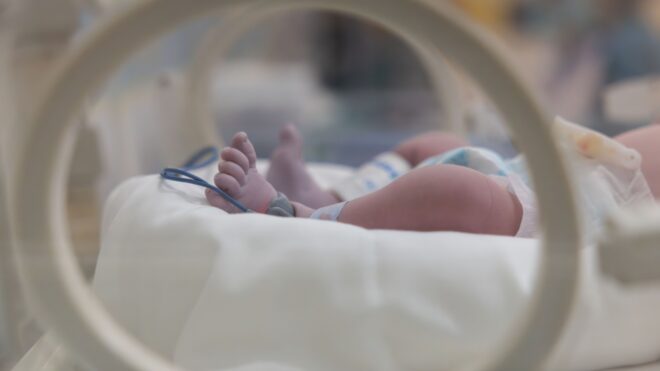If there's one thing you've learned as the parent of a toddler, it's that your child's growth is unpredictable. Seemingly overnight, clothes that fit for months are two sizes too small, and the straps in your car seat and stroller are suddenly way too snug. These growth spurts can come as something of a surprise, but they don't have to — not if you pay attention to a few unmistakable signs.
Once you know what to look for, not only will it help you to make sense of your child's behavior, but you'll have a better idea of how to help him cope with the physical changes.
"Common signs of a growth spurt include increased appetite, longer sleep duration, and possible leg and joint pains that occur while asleep," Ashanti Woods, MD, attending physician at Mercy Medical Center in Baltimore, Maryland, tells CafeMom.
More from CafeMom: How to Know If Your Toddler's Growth Is Normal
Every kid is different, so the fallout might not be noticeable, or you might wonder why your child is acting so weird! Here's how each of those symptoms might look in your child — and what you can do to help him through them.
Unusual Hunger
Toddlers who are going through a growth spurt might suddenly go from picking at their plates to eating everything in sight. This can be a shock to parents who are used to their kids eating a certain amount of food every day — so it's important to be prepared with plenty of healthy options, since hungry kids generally end up being cranky kids. And they need the extra nutrition to fuel all those added inches! Stock a stash of easy-to-prepare snacks that have plenty of protein and fiber (fruit, veggies, string cheese, yogurt, etc.). And be sure to fill your bag with them before going out!
Super Sleepiness
If your child seems to be napping longer or sleeping later in the morning, it could be a sign that a period of intense growth is brewing. While you can't always reschedule your family's day around your little one's fluctuating sleep patterns, you also need to ensure that your toddler is well rested during these times — so let her nap longer when you can, and sleep in when possible. You can even try putting her to bed earlier in the evening.
Aches & Pains
Probably the most difficult symptom of growth spurts is growing pains. These are often described as a dull ache or throb in the legs and can be bad enough to wake your child up in the middle of the night — particularly after a day of heavy activity or play, says Dr. Woods.
Putting a warm compress on the aching area can help, as can massage or even stretching (and acetaminophen or ibuprofen in more severe cases). But be careful not to dismiss every twinge as a growing pain: "While common, these aches should be further investigated if they persist for a prolonged period of time to make sure it's no other process taking place," says Dr. Woods. If the area where your child is having pain is red or swollen, or if your child has a rash or fever, call your child's pediatrician.
More from CafeMom: Your Child's Growth Chart Percentile: When to Worry and When Not To
Also, remember that your child's toddler years aren't the first time you've dealt with growth spurts — and they won't be the last, either.
"These periods are most pronounced during the first year of life and at the time of puberty," LeAnn Kridelbaugh, MD, president and chief medical officer at Children's Health Pediatric Group in Dallas, tells CafeMom.
You know what they say … growing up is hard to do!




